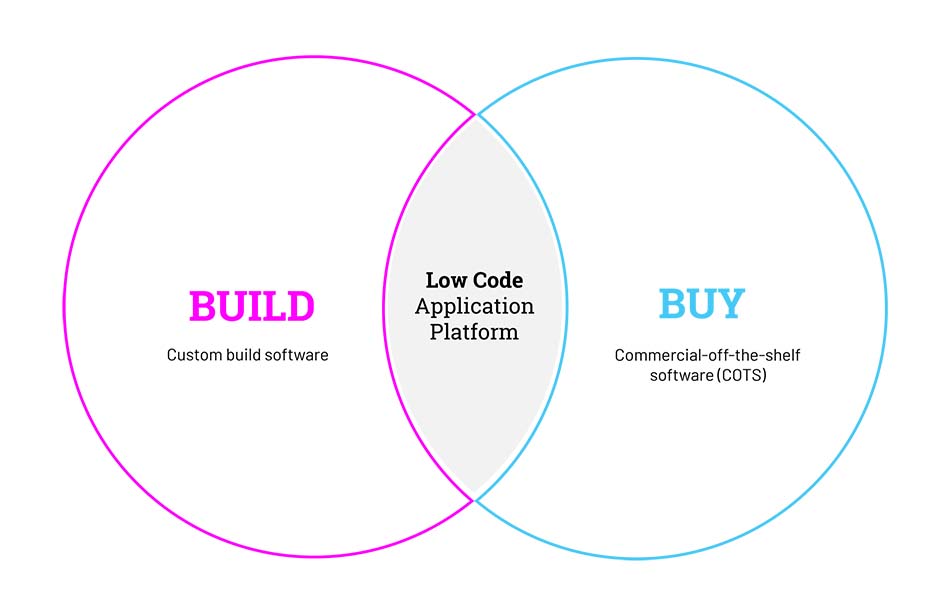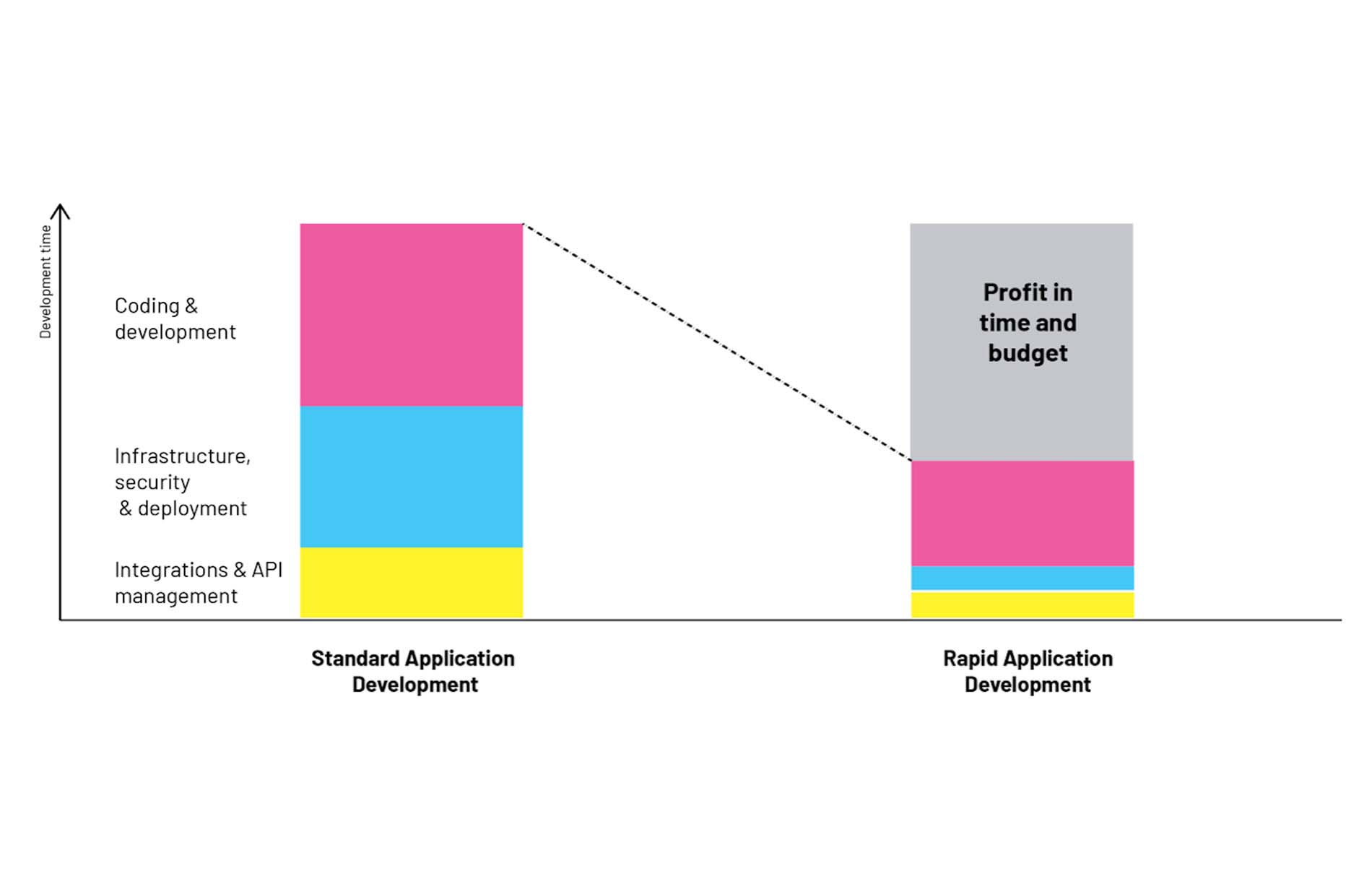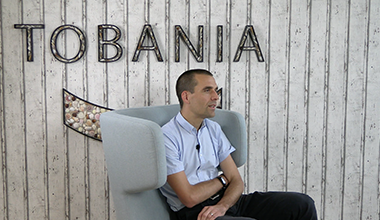Why’s low-code the ultimate mix of Build vs. Buy?
Since the corona pandemic, we can say that every company is now a software company. After all, we digitalised a lot of processes at a rapid pace. We even jumped three to five years ahead. In addition, there are many new technologies lurking around the corner that influence this acceleration.
We see, for example, that the first low-code apps appear and low-code is gradually taking its place in the market. Gartner even expects that by 2024, 60% of all apps will be built in low-code.
Why low-code? Well, low-code allows us to very quickly build applications based on existing modules. Very simplistically, you can build an app with drag and drop.
More insights?
Discover our insights page.
But how do you deal with this emerging trend as a company?
As an organisation, you obviously need a strategy. Or a roadmap. Here, solutions are plotted in time. Each with its own goal. The logical first step is then to decide whether to build or buy this application.
The traditional <Build vs. Buy> approach
For years, companies were recommended to build their own software. After all, the distinctive functionalities determined their competitive advantage. But since such software is a strategic business asset, the company would have to constantly adapt the software or make it available for all kinds of modifications to meet the constantly changing market demand.
Therefore, buying a non-differentiating off-the-shelf software (if available) often provided a pleasant alternative.
Buying something is seen as an approach that requires less time and investment. It is especially beneficial when requirements match and when flexibility and expandability are acceptable. More concretely, when a solution meets more than 80% of the company's requirements, buying rather than building is worth considering.
Low-code as an alternative to custom coding
What exactly is low-code? Forrester explains that "low-code" platforms enable rapid delivery of business applications with a minimum of hand coding. After all, you're working with existing components and a minimal time investment in set-up, training and deployment.
"Low-code" application platforms are known for their visual approach and high degree of automation of daily development tasks. This allows developers to maximise the time they spend on delivering real business value when creating low-code solutions.

We can safely argue that low-code can be positioned between Build and Buy. You first choose a low-code application platform (such as OutSystems), which is the Buy side. Then you use low-code to build your own applications, which is the Build side.
With low-code we experience a shortened development time in which average lead times are up to four times faster to deliver an application. We also notice that fewer technical profiles find their place in the teams. Through the visualisation of processes and flows, business profiles can also participate and adjust. You're doing the maths? Turnaround times are reduced once again.

In short: not an <or>, but an <and> story
Building software more often than buying it, can help companies boost their competitive advantage and become more agile. With the use of "low-code" platforms and the process of Rapid Application Delivery (RAD), the amount of time and resources traditionally associated with building proprietary software can be significantly reduced. This eliminates one of the most important Buy benefits.
Also, be aware that <building versus buying> is often no longer an "either-or" discussion. When you look at the problem as "customisation versus software composition", low-code emerges as an effective and elegant approach to customising and extending commercial off-the-shelf packages.
Did you know that we at Tobania are also working with low-code? We partner with OutSystems to implement low-code in companies. With a team of over 50 certified low-code specialists, we help our customers from assisting to fully managing application development.
Would you like to know more about our approach? Then do not hesitate to contact us.
Related insights
I just can't get enough.
Discover our news and blogs!
Want to receive our Tobania newsletter?
Complete the form and we will send you some interesting insights.


